How Much Does Landscape Design Cost?
By Axis Fuksman-Kumpa • September 4, 2023

Landscape design can be a great way to improve the look and feel of your property, but it can also be expensive. How much you end up spending will depend on a number of factors so it's important to be prepared.
In this article, we'll dive into some of the key considerations that will impact how much you end up spending on landscape design. We'll also explore some of the different materials and labor costs involved, so you can get a better understanding of what to expect when it comes to landscape design costs. Whether you're planning a large-scale landscape renovation or simply want to add a few new plants and features to your yard, read on for tips on how to manage landscape design costs effectively.

What is the role of a landscape designer?
First, let's look at the role that a landscape designer plays in this process. A landscape designer is typically responsible for creating a landscape plan, which involves determining the size and scope of the project and identifying any existing landscape features that need to be considered. They will then create a functional and beautiful plan to meet the client's needs, budget and goals.
A plan should be created with a budget in mind, but there are also ways to adjust a dream plan by phasing, DIY'ing parts, switching materials, and other ideas we will discuss in this article.
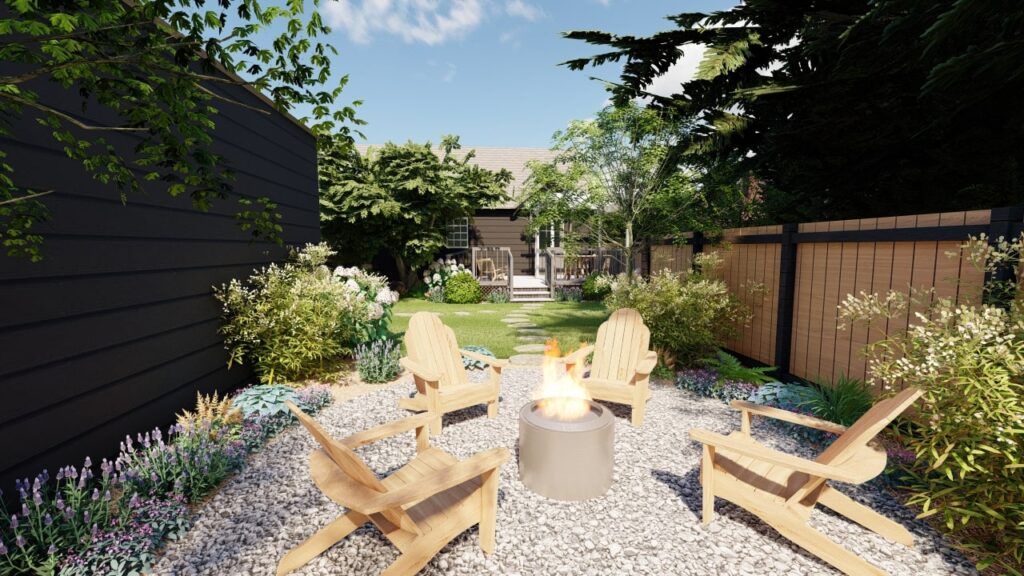
How much does landscaping cost? Factors in calculating landscaping budgets
The average national cost of landscape design can vary widely depending on a number of factors. To estimate the cost of your next landscaping project, consider the following variables.
Location
The location of your landscape is a key factor that will affect the overall cost of your entire project. Climate and geography will heavily influence the landscape design and the materials that will be necessary for your project. For example, if you are planning to landscape in an arid climate like Arizona or California, you may need to account for more expensive water-conserving techniques, as there are many rules and regulations around water use.
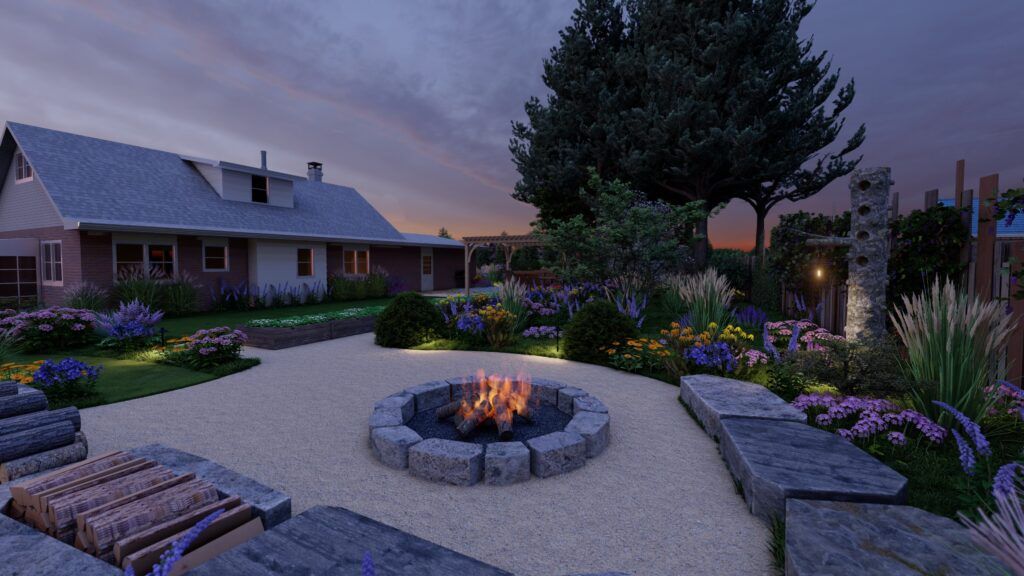
Property Size
The size of your property will undoubtedly play a role in the overall cost of landscape design. Larger properties will generally require more plants, materials, and labor, which leads to a higher overall price tag. If you have a large property but are looking to spend less, you can opt for smalller quantities and sizes of plants, a simpler design or take the phased approach.
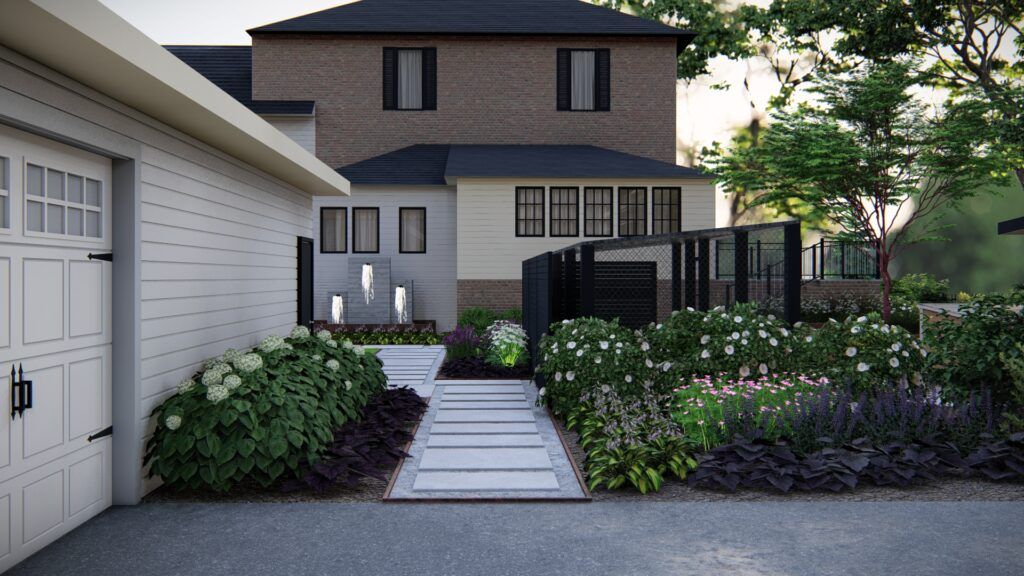
Materials
The cost of landscape design can be greatly impacted by the type and quality of materials used. More expensive materials such as natural stone or high-quality hardwood lumber will often result in a higher overall cost for the project. In contrast, less expensive materials such as gravel or landscape timbers can help to keep costs down.
One way to save money on material costs is to reuse existing materials from around your property. This can include salvaging old lumber from a demolished fence or picking up free landscaping rocks from a local gravel pit. Reusing materials can help to reduce the final cost of the project while still achieving a beautiful end result.

Labor
Labor costs vary and make up a significant portion of the overall landscape design project cost. Generally speaking, projects that require more labor will be more expensive than those that do not. But it's also important to consider the landscape design itself when estimating labor costs.
For example, more complex landscape designs will typically be more expensive than simpler ones, as they require more time and people to complete. Additionally, the location of your landscape project can also have an impact on labor costs, as certain areas may experience higher demand for landscape labor or have a limited supply of skilled workers.
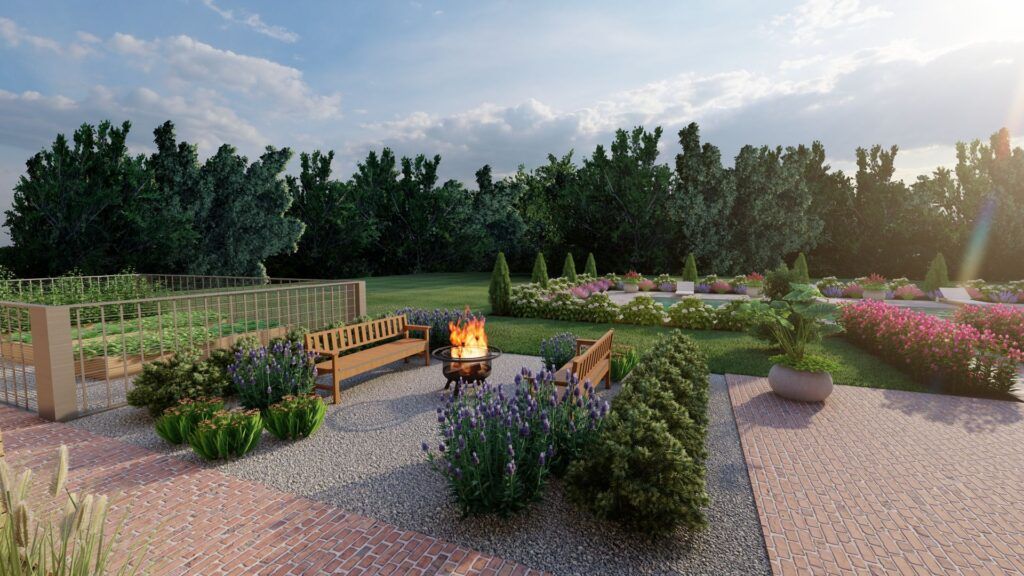
Size and scope of the project
If you are working with a limited budget, it is important to be realistic about the size and scope of your upcoming project. Choosing simple landscape projects such as mulch or updating your potted plants, for example, can help to keep material costs under control without sacrificing the overall look and feel of the landscape design.
Consider incorporating some DIY landscaping elements into your project. On top of helping save money, completing some of the work yourself creates an extra sense of pride in your new curb appeal.
Phasing is something we talk about a lot. This means breaking your project into different sections and tackling them when you have the time or budget. The key point here is to have a master plan to work from so you don't later realized you have to dig up hydrangeas because they cover the new fence gate!
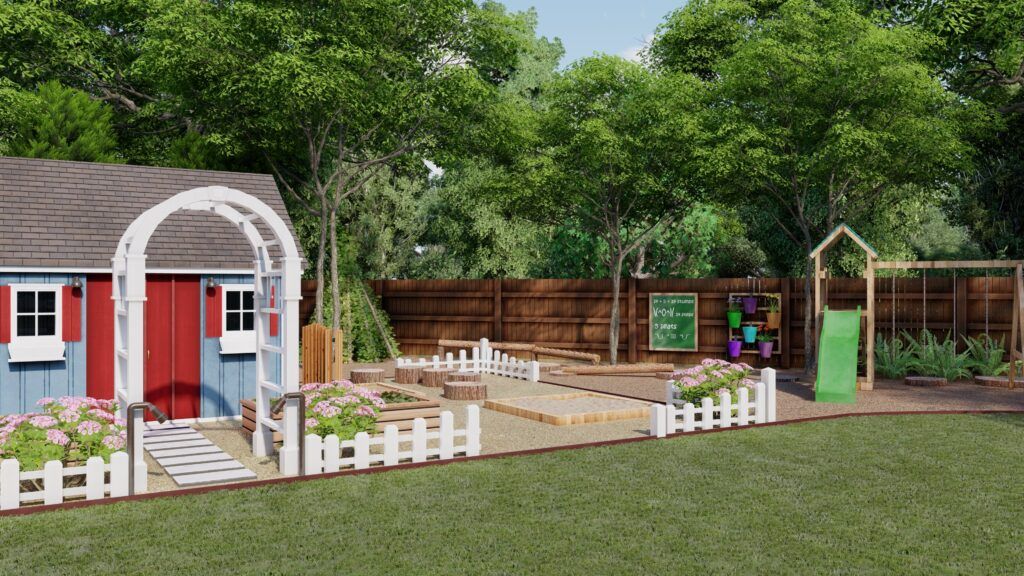
Terrain and accessibility
Like the location of your project, terrain and accessibility have a significant effect on what landscapers charge. A landscape that is easy to access or has few physical barriers will likely cost less than one with many steep slopes or other challenging features. Similarly, if your property requires more difficult or time-consuming elements to accomplish the overall project, you can expect to pay more.

The time of year
Landscape design can be a costly investment, but there are ways to make it more affordable. One of the biggest factors that will impact the cost is the time of year. Be sure to take this into consideration as you map out your entire project.
Generally speaking, landscape design projects undertaken in the spring or summer will be more expensive than those undertaken in the fall or winter. This is because many plants, flowers and trees are in high demand during the warmer months, and prices for these items tend to be higher.
Contractors are also in high demand in the spring and summer. If you're on a tight budget, consider starting your project in the fall or winter when demand is lower and prices are more affordable (or there may be negotiating room).
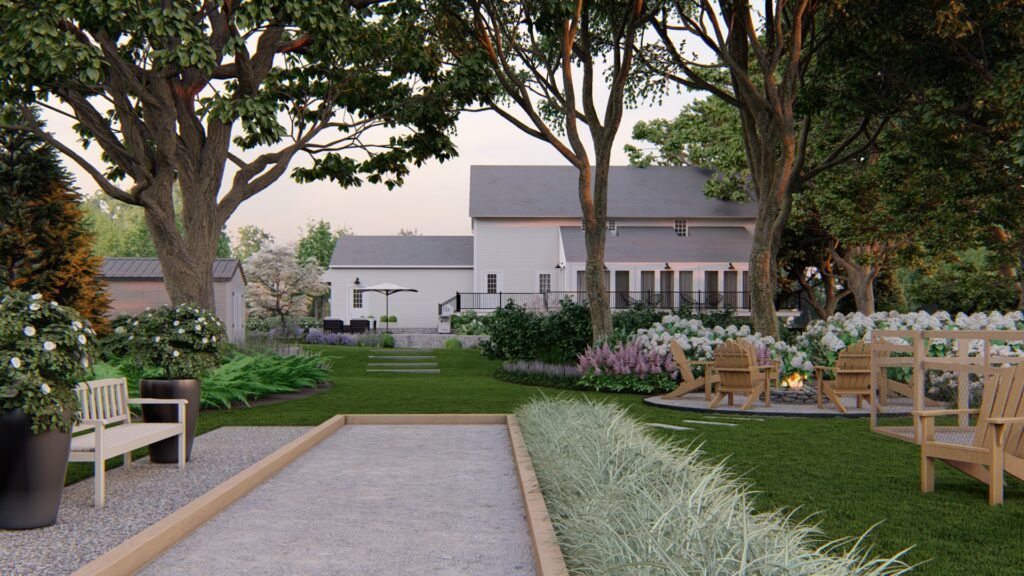
Typical landscaping costs for a professionally designed yard
When it comes to landscape design, most homeowners are eager to make the most of their outdoor space. But with so many options available, it can be difficult to know where to start and how much you should expect to spend. If you're looking for some guidance, read on for a breakdown of the average cost of landscape design.
Softscaping
Softscaping generally refers to the use of plants and plant materials in landscape design. It can include everything from lawns and gardens to trees and shrubs. Softscaping is often used to create a more natural or informal look in a landscape, and can be used to achieve a variety of effects.
The average cost of softscaping varies depending on a number of factors. The type and quality of plants used can affect the bottom line, as higher-quality materials will be more expensive. Additionally, the quantity of plants needed will also impact the final cost, as larger landscape designs typically require more materials. Other factors that may influence the price include labor costs and landscape design complexity.
Purchasing smaller, less mature plants is also a way to save money. The hardest part here is you'll need to be patient and understand they will take time to grow for your landscape to look it's best.
Additionally, choosing native plants that are well suited to your climate can reduce the need for costly landscape maintenance. With careful planning and attention to detail, you can create a beautiful softscaped landscape within your budget.
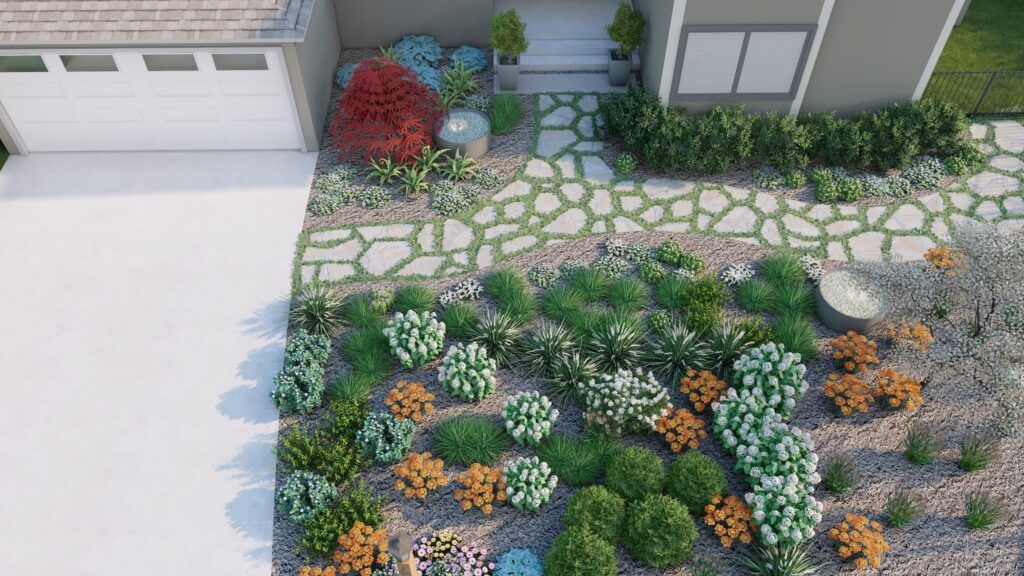
Hardscaping
Hardscaping is the use of man-made materials to add functionality, beauty, or both. This could include anything from paving stones and walls to fences and arbors. It is important part of landscape design, and can be used to create spaces for entertaining, dining, or simply relaxing.
While hardscaping can add a lot of value and beauty, it does tend to be more expensive than other features. In order to keep costs under control, it is important to carefully plan your landscape design and choose materials that are high-quality but also within your budget. Whether you are looking for simple paving stones or a more elaborate landscape design, there are a variety of options available to meet your needs and budget.

Maintenance
It is important to maintain your landscape in order to keep it looking its best and ensure that it continues to function properly. Landscape maintenance typically includes activities such as lawn mowing, weeding, watering plants, and trimming hedges. More long term maintenance may also include services like tree trimming, lawn seeding, or lawn fertilization. Regular landscape maintenance can help extend the life of your plants and landscape, and it can also reduce the need for costly repairs or replacements.
The national average cost for lawn care for a .50 acre lot is approximately $200 per month. This cost can vary significantly depending on the size and complexity of your landscape, as well as the frequency of maintenance required. To determine the best landscape maintenance plan for your needs, research landscaping companies in your area and compare maintenance costs per square foot.

Common Landscape Installation Services
When pulling your landscape design together, there are a number of contractors you may need to tap into, depending on what you are planning to DIY. Remember to always get multiple bids for contractors working on your yard and speak with references when possible. Some considerations include:
Landscape lighting
The use of outdoor lights in landscape design is known as landscape lighting. It is used to highlight features in the landscape, such as trees, shrubs, and gardens. Landscape lighting can also be used to create a safer environment by illuminating walkways and entrances.
Depending on the size and complexity of your landscape, landscape lighting may require a chunk of your budget. The average cost of landscape lighting installation services typically ranges from $200 to $600 per hour, depending on the type and quality of materials used. While the cost range of landscape lighting is fairly wide, adding this element to your landscaping project is the perfect way to showcase your entire project.
Sprinkler system
A sprinkler system can save you a lot of time and money. While we always recommend planting native plants whose water requirements align with your climate, all plants take water to become established and a sprinkler can help with this -- as well as maintenance as they grow.
For a sprinkler installation, the process typically involves laying out the landscape design and then installing pipes, hoses, and sprinklers that allow you to control the water flow and coverage of your garden.
In general, the average cost of installing a sprinkler system is around $1,500. Depending on your budget and average cost for installation, there are various types of sprinklers and systems that you can choose from, allowing you to customize your landscape design to meet your needs.
If you are looking for a budget-friendly option, there are simple sprinkler heads that can be installed in a matter of hours by a professional installation team. However, if you are looking for more advanced features, such as the ability to adjust water flow based on weather conditions, you may want to consider a more high-end system that may come with a higher average cost. Remember that a smart water system can ultimately save you money in the long run if you are able to save on watering your lawn on a rainy day.
Drainage
Drainage is an important aspect of landscape design, as it helps to ensure that water doesn't accumulate and cause damage to the landscape. When designing a landscape, it's important to take into account the slope of the land and how water will flow naturally. If necessary, you can add drainage features such as gutters, downspouts, or catch basins to help move water away from the landscape.
It's also important to make sure that the landscape is designed in a way that allows for proper drainage of rainwater. If water isn't drained properly, it can cause flooding and erosion. Additionally, landscape design that doesn't incorporate proper drainage can result in soil compaction increased runoff, which can lead to significant water pollution.
Pathways
Pathways play an important role in landscape design, as they can impact both the function and aesthetic of a landscape. When planning a pathway, it is important to consider the following factors:
- Budget: How much can you afford to spend per square foot on the pathway?
- Location: Where will the pathway be located? Consider the terrain, sun exposure, and other features that will impact the path.
- Materials: What kind of materials will you use for the path? Brick, concrete, stone, or wood are all common options.
- Design: How do you want the pathway to look? Will it be simple or ornate? Straight or winding?
Once you have considered these factors, you can begin designing your pathway. Pathways can add interest and functionality to any landscape, so be sure to include them in your plans!
Fire pits
If you want to add functionality to your outdoor living space, installing a fire pit is a great option. Fire pits are easy to incorporate into landscape designs, and they can be quite affordable, with average costs ranging from $400 to $1,000 or more.
When choosing the location for your fire pit, it's important to consider serveral variables. You'll want to choose an open space that is well-ventilated and has plenty of room for seating. It's also important to take proximity into account, as positioning the fire pit too close to your home or any structures could increase the risk of smoke damage or fire hazards.
Once you've chosen a location, the overall design is also important to consider. Some popular choices include freestanding pits made from stone or brick, or custom fire pit designs that are integrated into components like retaining walls or a concrete patio.
Outdoor kitchens
Outdoor kitchens can be a great addition to any home. They provide a space where you can cook and entertain outdoors, and they can add value to your home.
The cost of an outdoor kitchen will vary depending on the size and complexity of the project. Basic kitchens can be installed for around $2,000, but more elaborate kitchens with features like sinks, ovens, and refrigerators can cost much more.
When planning your outdoor kitchen, be sure to budget for both the cost of materials and the cost of labor. Most professional landscape designers work by the hour and charge around $50-$75 per hour for their services.
Decks
Adding a deck to your landscape design is a great way to maximize your outdoor living space. Not only does it provide a great place to relax and entertain guests, but it can also be a valuable addition to your home's overall value.
The average cost of a deck depends on a number of factors, including the size and materials used. For example, a basic deck made from wood or composite material will typically cost less than a larger custom deck with higher-end features. Typically, deck projects range from around $1,000 to $7,000 or more, depending on the size and quality of materials used.
Additionally, you'll need to consider how you plan to use your deck. If you looking for a space for relaxing and socializing with friends and family, you may want to opt for a larger deck that includes features such as built-in seating or a pergola. If you want to use your deck for more practical purposes, such as storage or other activities, you may want to consider a smaller and simpler design that is easier to maintain.
Gazebos
Not only is a gazebo a great place to relax or entertain guests, but it can also add value to your home. When it comes to landscape design, choosing a gazebo is an excellent way to add beauty and functionality to your property.
There are many different factors that go into budgeting for a gazebo. Some of the key considerations include size, material type, and additional features such as lighting or seating. On average, the cost range can be anywhere from several hundred dollars to thousands, depending on these factors and the overall complexity of the project.
Fencing
When it comes to landscape design, fencing is an important element that can add security and privacy to your yard while also enhancing its aesthetics. When choosing a fence for your landscape, the materials used will be the driving factor in the overal cost.
There are a variety of fencing materials to choose from, each with its own advantages and disadvantages. While wooden fences are the most popular type and the most affordable, they require regular maintenance to keep them looking good. Vinyl fences are a more expensive option, but they're durable and don't require any painting or staining. To fence an acre lot with a 6 foot privacy fence, you can expect to spend roughly $1,500 - $2,200 on average. To fence the same yard with a 6 foot vinyl fence, the cost would be closer to $3,000 - $5,000.
When choosing a fence, it's important to consider both aesthetic and practical factors. So whether you're installing a fence for the first time or simply looking to upgrade your existing yard, consider all of your options and find the right fence for you.
Planting flower beds
Adding flower beds to a landscape design can add color and life to the area but at a fraction of the cost compared to other projects. Before you start planting, it's important to consider a few factors.
To start, it's important to take into account your current landscape design and any existing features that you plan to keep or incorporate into the new flower bed. Next, consider the size and shape of the flower bed that you are planning and whether they will fit into your landscape in a cohesive way.
Once you have considered these factors, it's time to start thinking about the budget for your landscape design project. Depending on your needs and preferences, flower beds can be quite affordable, with average costs ranging from $200 to $600 per bed. This will depend on several factors such as the size of the flower beds, the plants or materials that you choose, and any additional landscape features that you include.
Planting trees and bushes
The average cost of adding trees or bushes to a professional landscape design can vary depending on the size of the project, the types of plants involved, and the complexity of the design.
If you are looking to landscape your property on a budget, there are a few strategies that you can use to save money. One option is to choose smaller plants or shrubs, which tend to be less expensive than larger specimens. Additionally, consider opting for perennials or other plants that do not require annual upkeep, such as pruning or spraying. Finally, be sure to work closely with your landscape designer to develop a design that is both functional and beautiful, without breaking the bank.
Mulching
If you are looking for an inexpensive way to boost curb appeal, spreading mulch is one of the most popular landscaping projects. Mulching involves spreading a layer of organic materials, such as bark chips or wood waste, over the top layer of soil in your landscape. This can help prevent weed growth, retain moisture in the soil, and improve the overall appearance of your landscape.
The average cost of mulching a landscape will depend on several factors, including the size of your landscape, the type and amount of mulch used, and any additional labor costs related to spreading the mulch. On average, you can expect to pay per square foot between $0.50 and $3.00 for mulch, depending on the materials and quality of the product.
Landscape curbing or edging
Landscape curbing or edging is an excellent way to add visual interest and define landscape areas, making your yard look polished and well-maintained. It is usually made of concrete, stone, or plastic, and is installed along the edge of driveways, sidewalks, flower beds, and other landscape features. A less expensive alternative is to not use any material, but instead use a shovel to create a crisp line between soil and grass.
Curbing or edging can be expensive, but it can add a lot of value to your landscape. The average cost of landscape curbing or edging ranges from $3 to $10 per foot, depending on the type and quality of material used. While higher-quality materials tend to be more expensive, they also typically last longer and look better than lower-quality options.
Ultimately, this landscaping process helps to define and beautify landscape areas. So if you are looking for a budget-friendly landscape upgrade, consider installing curbing or edging in your yard.
Land grading
For more complex residential projects that involve sod installation or turf installation, you may consider land grading first, which is the process of sculpting and shaping the earth's surface to create a desired landscape. It is typically used to optimize drainage, erosion control, soil preparation, and landscape architecture. The cost of land grading can vary depending on the square footage and complexity of the project, but typically ranges from $800 to $5,000 on average.
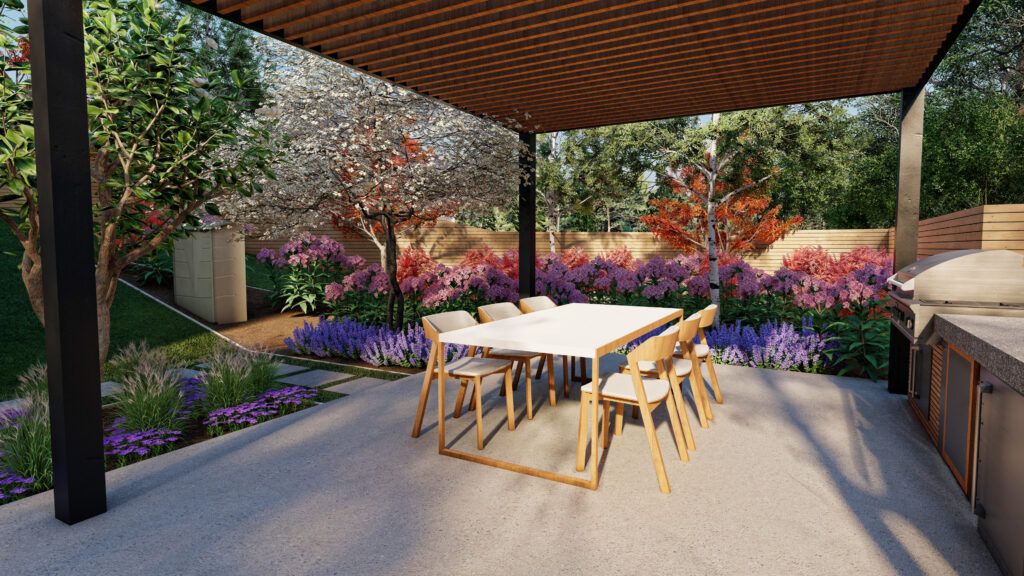
Cost of high-impact landscape design elements
Landscape design can be a great way to improve the look and feel of your home, but it can also be costly. One of the most expensive elements of landscape design is the installation of high-impact features, such as water features, ponds, and concrete work. If you're budget-conscious, you may want to consider these features carefully before investing in your landscape design project. According to landscape professionals, the average cost for a high-impact landscape feature ranges from $500 to $5,000.
Additional costs and considerations
As you map out your landscaping project with an experience landscape designer, there will be a lot of details to consider.
Basic services vs. additions vs remodels
Keep in mind that the type of project you take on will have a significant impact on the price. Landscape design projects can be broken down into three categories:
- Basic services: These typically involve the installation of basic features such as trees, shrubs, perennials, or services like basic lawn care. These can range in cost depending on factors such as soil type and quality, size and type of plant material used, and whether the services are peformed by a professional landscape company or DIY.
- Additions: If you're looking to add some more visual appeal to your landscape, an addition might be right for you. Adding features such as patios, decks, walkways, and pathways or could involve laying sod or artificial turf. However, additions can also be fairly costly per square foot, depending on the square footage and complexity of your project and the materials used.
- Remodels: Finally, if you're looking to make major changes to your landscape or landscape design, a landscape remodel may be the best option for you. A good example of this would be a swimming pool. Like additions, remodels can also be quite costly depending on the scope of work needed, as well as the materials used. However, with careful planning, a budget in mind, you can achieve the landscape design of your dreams.
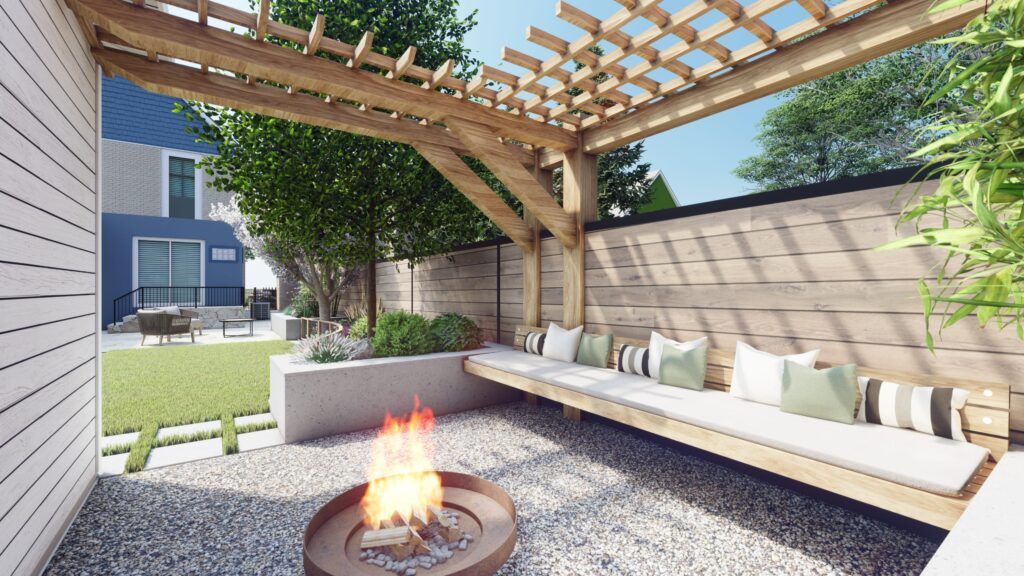
How can I lower my landscaping costs?
Landscape design can be a great way to improve your home, but it can also be expensive. If you're looking for a way to add some high-impact elements to your landscape design without going over budget, here are a few tips that might help.
- Phase your design one piece at a time, working from a master plan
- Consider opting for lush plants and trees that are native to your area; they will require less maintenance and add ecological value to your design
- Try to DIY as much of the landscape design as possible; this will save on labor costs.
- Purchase smaller plants and trees and let them grow to mature sizes
- Use existing materials for your outdoor space,when possible
- Swap materials for a lower priced material
- Reduce lawn, which will save on maintenance
- Focus on water conservation practices (and systems) to help save
- Compare prices from several different landscape designers before making a decision
By following these tips, you can get the landscape design of your dreams without breaking the bank!

Conclusion
Overall, landscape design is a complex but rewarding process that can help to transform your own yard into a beautiful and functional area. Whether you are planning for monthly lawn care, a small renovation, or a large-scale redesign, be sure to carefully consider your landscaping budget. With professional landscaping and a bit of time and effort, you can create an outdoor living area that you will truly love and enjoy for years to come!
Read more about: Landscape Design Tips, Gardening Tips